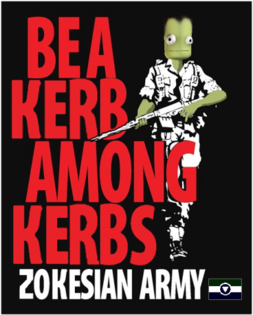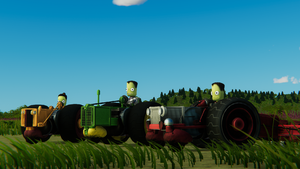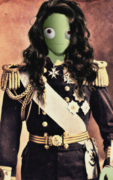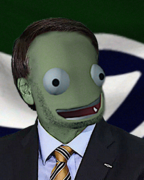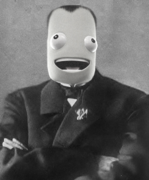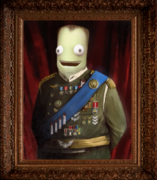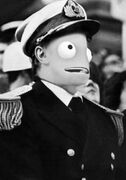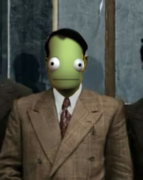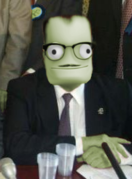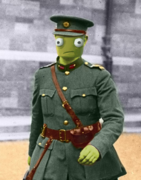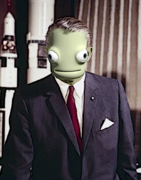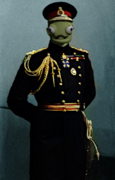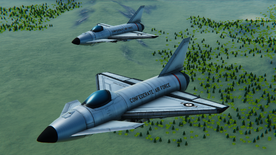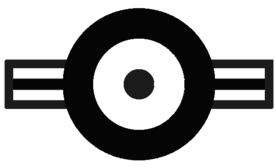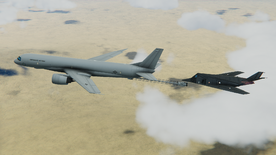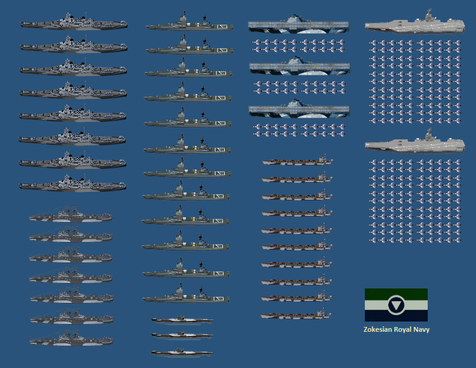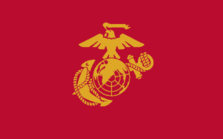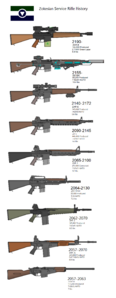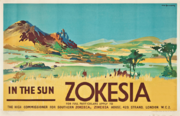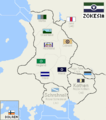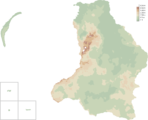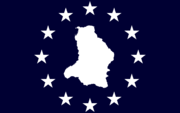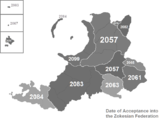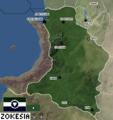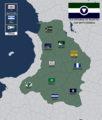Zokesia
|
Republic of Bosmyth and North Zokesia
|
|||||
|---|---|---|---|---|---|
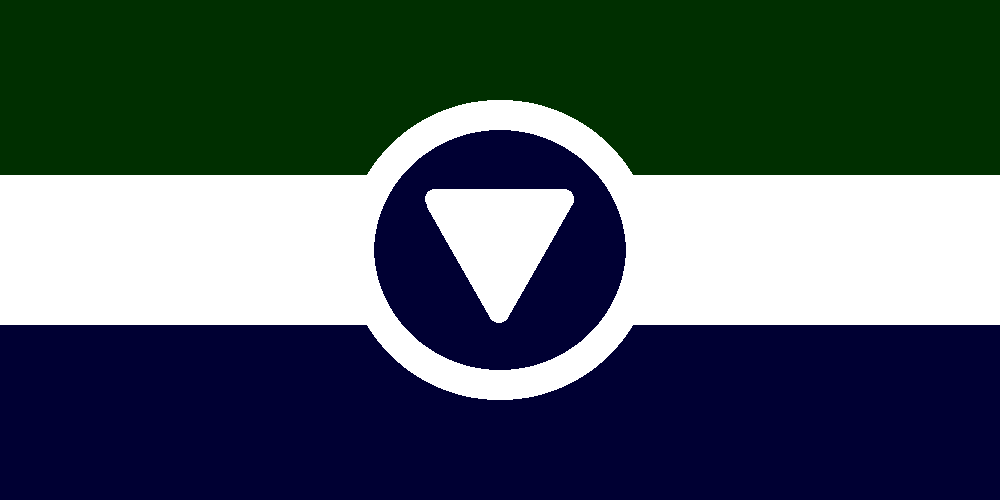 |
|||||
| The Green of the northern lands of Bosmyth, the Royal Blue of North Zokesia, and the White of the Eastern Desert in between. | |||||
| Motto | "Pacem Bello" | ||||
| Common Name | Zokesia | ||||
| Anthem | "Zokesians Never Die" | ||||
 |
|||||
| Official languages | Zokesian | ||||
| Currency | Thaved | ||||
| Politics | |||||
| Capital | Ezekialgrad | ||||
| Government | Federal Parliamentary Republic | ||||
| Foundation | 2057 (Current Constitution) 986 (Kingdom of Zokesia) 421 (Independence from Kjolsen) ~200 (Zokecyrland) |
||||
| Preceded by | Bosmyth, Charum, Neo-Zokesia | ||||
| Demography | |||||
| Ethnicities | 90.2% Zokesian 5.8% Ravnian 1.7% Pugarayan 1.2% Baskian 1.1% Other |
||||
| Population | 19,688,943 | ||||
| Area | 46,337 km² | ||||
Zokesia, officially known as the Federal Republic of Bosmyth and North Zokesia (Zokesian: Bundesrepublik Bosmyth und Nordzokesia), is a prosperous nation of predominately farmland located in Western Kolus east of the Crater Bay. Bordered by Surnay in the north, KRATOR in the west, Arcovdonia to the south, and Nuvastia in the East, Zokesia is almost entirely landlocked. Only the capitol of Ezekielgrad and Freetowne are free to trade on the open ocean to the north.
Government
The Zokesian Federal Government is made up of a single Lord's Parliament, which is voted in by the people every five years. Each of the 10 states of Zokesia nominates 8 representatives in the Parliament, with overseas territories of Bayconn, Fish, and Kercia receiving 4, and from the interplanetary colonies an additional 3 each.
There are a total of 98 members of Parliament, including the President and Chancellor. There are many parties and coalitions are usually required to win a majority, from which a President and Chancellor is decided amongst the victors. The current President is Maximilian I, and the current Chancellor is Gregory Kampfer. The Chamber of Weights and Measures handles economic and judicial matters, and the military is led by Zokesian High Command, at its head the President.
Federal States
Zokesia's constitution gives power entirely to the federal government. The interior states of Zokesia are locally run at the county level for issues of policing and community but otherwise do not operate autonomously. Sometimes known as "states" these groups have little influence beyond their own sphere, though the Federal government usually takes efforts to keep red tape at a minimum so the provinces can operate as efficiently as possible. The state of Monta is run by the Federal Government directly, as it contains its capitol.
Zokesia also has two interplanetary colonies, Wardian Korfu and The Federal Republic of Rhodes, population 4 million and 1.5 million respectively.
Economy and Infrastructure
Zokesia's economy is built on its bountiful farmland. From Ezermont to Zok large swaths of countryside make Zokesia the breadbasket of Old Kolus. The cities are often the hub of cultural and commercial trade, with paved 2-lane highways stretching north to south connecting the large areas of Zokesia.
Economy
Farming is primarily carried out by small communities or local families, operating modern technology which allows them to utilize large swaths of farmland. Food is sold to the commercial farmer's unions, which ship it along the highways to the cities for processing and distribution. the size of the farms usually mean small townships are formed away from the cities where groups of families live and commune to come together as a community, off the highways.
Manufacturing and service industry dominate the northern cities. Designed to process exports south, these cities take raw materials and either ship them out or turn them into parts, equipment, or exports. Here in the north coal, iron, and steel industries boom and the Oil reserves of Zokesia are located, allowing the factories to continue pumping out materiel for the people of Zokesia. It is here that Military Industry, and the bulk of the raw materials needed for the arms manufacture, is located.
To the east, the city of Juno houses the high tech development centers of military companies such as Ward Industries, Zokesia Skunkworks, and Extramus Military Techology. The deserts to the east are weapons test ranges and training centers.
The southern cities are removed from the industrious north, and instead house a thriving service industry and medium-size industry. Fine art and trade professions ship goods out to the north and export out of the country. With the addition of Schrschnell and Kothen to Zokesian Statehood, trade from the northern cities flows through Zok and Esia to reach ports in the south, as well as the millions of Zokesians living in the states. Zok and Esia's arts and goods travel far and wide as a result, and fetch high price outside Zokesia's borders.
Royal States
The Royal States of Zokesia, formerly known as the Federal States, are nation-states outside of the old Zokesian border, and include Schrschnell, Juno, Wardia, Sur-Krakain, South Forseti, Bayconn Island, and Fish Island. These nations pledge economic and political support to Zokesia and answer directly to the regent of Zokesia, Heir to the throne of Drekevak. As long as the Republic of Zokesia acts lawfully and in accordance with the people the states are required to follow Zokesia's laws and edicts. The leaders of these states are hand picked and are loyal to the Prime Minister. Elections are every 5 years with the prime minister being decided by the winning party or parties should a coalition be required for majority.
Schrschnell, the oldest of the Zokesian Federal States, has been with the nations since 2063, when it broke free of then-Sanctum and was settled by Zokesians, who over time developed the nation into a thriving economic success, thanks to its large ports and trade proximity to Zokesia. To the east, a similar settlement of Wardians and Sur-Zokesians turned the Nuvastian province of Wardia into a Zokesian prospect, and when the former nation fell to Sahr in 2141 it broke free and joined its Zokesian brothers as a Federal State.
Sur-Krakain formed out of a deal with Arkeria, as its people desired a return to old values, and looked to their ancestral benefactor, Zokesia, as an ally. The nation remains sovereign, but is protected by Zokesian naval and air assets and enjoys free trade relations as a member of the Zokesian Confederacy.
South Forseti was a backwoods, barren landscape before the dust bowl of 2135. in the years following, thousands of Zokesians flooded into the military-occupied state and settled it as a homeland, where cattle, sheep, and fishing became the dominant economic factors. The strategic importance of the strait also guarantees a Zokesian presence at all times in the area.
Bayconn island is the ancestral homeland of the Sur-Zokesian race, and is regarded as holy ground. A naval and air base on the island also protect Zokesian trade to the northern territories and Burr.
Fish Island is the second farthest Western territory of the Zokesian Federation. Its proximity with Kerborg allows trade to go through the Baskay seas and for the Zokesian Navy to operate far beyond what its normal range limits would be.
Major Corporations
See Also: Corporations of Zokesia
Zokesia features multiple high value companies thanks to the open market and constant demand for new military contracts. There are many manufacturing industries in the north of Zokesia, and provides the raw power output to fuel the ever growing Zokesian economy.
Cyten-Ward Industries produces aircraft, weapons, and other high tech devices for the Zokesian Military. Among their designs are the Dingo multirole transport.
GreyStone is a Zokesian multi-national investment company based in Ezekielgrad. Founded in 2062, initially as a risk management and fixed income institutional asset manager, GreyStone is the world's largest asset manager, with THA$10 trillion in assets under management as of January 2159.[3] GreyStone operates globally with 70 offices in 30 countries, and clients in 100 countries.[4] Along with Vikusgard and Stahl Sieg, GreyStone is considered to be one of the Big Three index fund managers that dominate NEOCON.
Sun Rifle Company produces small arms and manufactured the ZAR-3, ZAR-5, and other light arms For the Zokesian Military.
Zokesia Skunkworks is the oldest and most famous Zokesian company and is actually a commercial branch of the Zokesian government, which maintains both federal and commercial contracts and investments and works on the highest black projects.
Standard Oil of Zokesia is the largest fossil fuel and natural gas producer in Kolus. Standard Oil of Zokesia has been an integral part of Zokesian economics as well as politics, most notably 2060s onwards.
Government
The Presidents (the position was renamed from Prime Minister in 2083) and Chancellors of Zokesia hold executive power and are elected by a straight majority of Parliament after the general elections.
The President is in charge of the daily foreign policies of the nation, the Commander-in-Chief of the military, and the highest official in the nation. The President is tasked with maintain the ship of state in the world, meeting with other leaders and supporting the interests of the nation on a global stage. In the domestic regions, the President gives rallying speeches and oversees official games and events inside the nation, and has direct control of the nation's federal strategic reserves and space assets.
The Chancellor oversees domestic issues, meets with the parties and bridges the gap in parliament between parties to push through legal issues and argue on the President's behalf. Domestically, the Chancellor is the Chief of Police, and is responsible for the handing out of government contracts at a state-wide level.
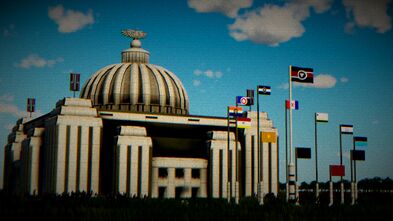
Military
The Zokesian military is a combat tested and venerable service. The military is led by the Zokesian High Command, a series of Generals, advisors, and number crunchers who deliberate and dictate military doctrine, issue commands, and lead campaigns against Zokesia's enemies. The military history of Zokesia is deeply intertwined with the nation's history, with some of its most esteemed leaders rising through the ranks of the army or navy before taking control of the national helm.
Air Force
- Main Article: Zokesian Royal Air Force
The Zokesian Royal Air Force is comprised of 5 Fighter Groups, tasked with Air defense of Zokesia. Each fighter group has 3 separate squadrons of fighter aircraft. The strength of each fighter group is 10 Z-80, 10 F-52J Kargadan, and 10 "Kaminari". Additional support from foreign imports began in 2140 and increased steadily during the Zokesian Civil War, with outside aircraft making up over 50% of the Air Force by 2144.
The Z-80 has been a staple of Zokesian frontline fighter service in one form or another since 2065, and the newest versions are dedicated air to air fighters with the purpose of taking air superiority from the enemy, though they are able to load ground ordinance once their primary task has been acheived. Alongside these, the Kaminari likewise is air superiority oriented and has little to no air to ground capability. The F-52J Kargadan, however, is designed to be a dedicated multirole aircraft, capable of precision strikes on ground targets, CAS, SEAD, DEAD, and air defense. A multi-purpose tool, the F-52J is well liked by its pilots.
Bomber Command is the name given to the Zokesian strategic command overseeing long range bombing operations. Their primary tool is the B-52, though in the past B-100 blackouts, V-4s, and other aircraft have been used for the purpose. 1st Bomber Squadron, based in Freetowne, has 5 Heavy bombers at their disposal and act as Zokesia's standoff deterrent to opposing nations.
The Zokesian Air Force has seen battle both at home and abroad, participating in the Zoke-Sovie War, the Doren War, Red Horde War, Doren War, 1st and 2nd Continental War, and many other operations.
- Main Article: Zokesian Royal Navy
The Zokesia Navy began as a four Transport barges for naval-based land invasion. To protect the transports, a dozen Escort ships bolstered the fleet and allowed defensive operations around Zokesia's coasts. For much of the 21st century, the Zokesian Navy suffered from lack of budget for surface ships, and its greatest strength was fleet carriers with which to project power to far reaches of the globe.
The formation of Arkadii-Zokesia saw an influx of designs and a return to a large standing fleet, but this was all but wiped out by mechanical neglect and lack of parts during the blockade of 2090. With the development of the Morser class battleship with Orion and Phoenia, the Zokesian navy lept forward lightyears in offensive firepower on the open ocean. Now the fleet was no longer forced to rely solely on airpower to defend itself and carry out its mission. The 22nd century saw the Zokesian navy explode into a massive force, and during the Gallante war it tripled in size. Its peak was in 2136, when the 26th and final Morser was built.
Over the past two decades, the fleet has returned to a more balanced force, and today, the Zokesian navy operates a primarily surface fleet with heavy attack aircraft in anti-sea and close air support roles, supported by heavy battleships and guided missile destroyers. Eight battleships support two fleet carriers, the ZNS Imperator Drekevak and the ZNS Emperor Zeroth, and are protected by destroyers, sub chasers, and submarines. Many ships have been bought from outside nations, with Zokesian naval officers choosing only the highest quality ships for their fleet.
The most famous action in recent history by the Zokesian Royal Navy took place in 2148, when Emperor Zeroth and the combined fleet took North Point from Arcadia during the Reclamation war. In 180 air-to-ground and 140 air-to-air sorties, Zokesian and UIF naval aviators had accounted for four battleships, 110 torpedo boats, ten OPVs, an arkadii-soyuz carrier, and over 110 Arcadian fighters. they had suffered just 20 fighters lost in the process. The battleships saw open combat against equal Arcadian vessels, sending 4 to the bottom and scattering the enemy. It was the first time the Zokesian Navy had entered a surface engagement of battleships since the founding of the nations in 2057, and they came out on top.
The Zokesian Royal Navy is comprised of 8 battleships, 2 fleet carriers, 12 guided missile destroyers, 7 submarine chasers, 3 submarines, and 8 transports, which are usually in the custody of the Zokesian Marine Corps. The Zokesian Naval Aviation is made up of 20 fighter and 4 support squadrons, with 120 K-52C Kargadan and 80 Kaminari aircraft. The support squadrons, being 21st and 22nd VBQ, operate 10 Z-5 Medium bombers each, and are tasked with anti-ship and strategic operations, while the final two squadrons operate MZ-22 transport aircraft and EF-4 Skyshield AWACS, for command and control of naval territory and aircraft direction.
Zokesian Marine Corps
Founded in 2055 in a bar in Ezekielgrad, the Zokesian Marine Corps was created to protect the shipping of Zokesian city-state Ward on the crater sea, after pirates were taking a toll on their profits. The outbreak of war with Sanctum and resulting independence secured the Zokesian Marine Corps a permanent position as the designated troops for naval invasion across Kerbin. In 2062, the Zokesian Marine Corps landed in Delras to overthrow the communist regime, succeeding in taking over the nation in three weeks. A naval landing in Bravis in 2104 returned the island nation to the Zokesian sphere, and demonstrated Zokesian logistical experience in maneuvering a whole army onto the other side of Kerbin. The largest naval invasion in Marine Corps history was in 2148, when Operation Carolinas saw over 150 Marine tanks and support equipment land on North Point in the Reclamation war.
The Zokesian Marine Corps has weapons from many other branches, and is in itself a small self-sustaining combat force. 60 K-52J Kargadans serve as air superiority and ground support aircraft, whose sole purpose is to support the 30 Rhodie and 34 ZLT-49 light tanks, and 14 ZAW83 ATGM Launchers which make up the two Marine brigades. The Marine Raiders are a special forces unit that utilize airdroppable light tanks, Kugel technicals, and ZAW83s to deploy behind enemy lines and perform missions without detection. The Marine Raiders utilize the MZ-22-4 Electric Albatross to insert and extract, a vertical takeoff aircraft with pivoting rotors which allow vertical hover and horizontal flight. The two Marine brigades are traditionally transported on LCH landing craft, of which 8 are in service.
Army Light Infantry
The Zokesian army is a volunteer force of 300,000 kerbals, half of which are in Reserve duty during peacetime. The standard caliber of Zokesian small arms is the 7.62x57 TAU round for ease of production and procurement.
The army standard issue battle rifle as of 2140 is the select fire ZAR-6, although modernized versions of the older ZX-5 (introduced 2090) are still in service as well. The ZAR-6 Features a combined holographic and iron rear sight for more accurate sight alignment and built in durability. The ZAR-C was a paratrooper version of the ZAR-21 which had a folding stock and smaller hand-guard. Mixed reviews led to only a few thousand being produced and later converted to the 5.56 TAU intermediate cartridge when the ZAR-4765i was introduced in 2064 to some assault and special forces units. The Zoke-Sovie war proved a need for a Light Automatic Weapon that was superior to the ancient ZMG-58 (which was reportedly left over from half a century previous Avalon military), so the ZMG-60SAW was built in early 2059 to fill the role of a support weapon for the average rifleman. Standard sidearm of the Zokesian military is the P-1 Pistol, though most officers use commercial sidearms as their weapon of choice.
Armored Corps
The Zokesian Armor Command is the largest branch of the Zokesian Army, and utilized the latest in advanced weaponry to defend the borders of Zokesia at home as well as complete operations abroad in conjunction with the Air Force and Navy. 3 Armored brigades make up the bulk of the army, with the newest Rhodie RHDE-152 and ZAW83 ATGM launchers to support them. The combined arms tactics of the Zokesian military mean no army operations are ever carried out without support from at least one other branch's air power, and as a result the Army itself does not field any aircraft. The Zokesian Air Force's strike capability and air superiority means anti-air is relegated to a secondary task of rhodie crews, which have an impressive secondary capacity with smaller arms to fight off aircraft and light vehicles. The ZAW83 is purpose built to launch deadly guided missiles at enemy vehicles and knock them out allowing the tanks to secure victory quickly over their now shellshocked enemies.
The Zokesian Armored Corps made its debut with secondhand weapons in the Battle of Zok in 2057, quickly proving their heroics and bringing about a swift victory for Zokesia in her independence war. The largest ground combat the Zokesian Armored Corps participated in was the Battle of Red Horde, and the Doren War, which saw a huge effort of kerbal and machine to fly the army over to the west of phosphor and eliminate hundreds of horde vehicles.
Zokesian Coast Guard
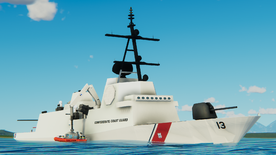
The Zokesian Coast Guard is the maritime security, search and rescue, and law enforcement service branch of the Confederacy of Arcovii-Zokesia and one of the country's eight uniformed services. The service is a maritime, military, multi-mission service unique among the Confederate military branches for having a maritime law enforcement mission with jurisdiction in both domestic and international waters and a federal regulatory agency mission as part of its duties. It is the largest coast guard in the world, rivaling the capabilities and size of most navies.
The Confederate Coast Guard is a humanitarian and security service. It protects the Confederacy' borders and economic and security interests abroad; and defends its sovereignty by safeguarding sea lines of communication and commerce across territorial waters and its Exclusive Economic Zone. Due to ever-expanding risk imposed by transnational threats through the maritime and cyber domains, the Confederate Coast Guard is at any given time deployed to and operating on all seven continents and in cyberspace to enforce its mission. Like its Confederate Navy sibling, the Confederate Coast Guard maintains a global presence with permanently-assigned personnel throughout the world and forces routinely deploying to both littoral and blue-water regions. The Confederate Coast Guard's adaptive, multi-mission "white hull" fleet is leveraged as a force of both diplomatic soft power and humanitarian and security assistance over the more overtly confrontational nature of "gray hulled" warships. As a humanitarian service, it saves tens of thousands of lives a year at sea and in Confederate waters, and provides emergency response and disaster management for a wide range of human-made and natural catastrophic incidents in the Confederacy and throughout the world.
History of Zokesia
- See Also: List of Zokesian Monarchs
Gallery
